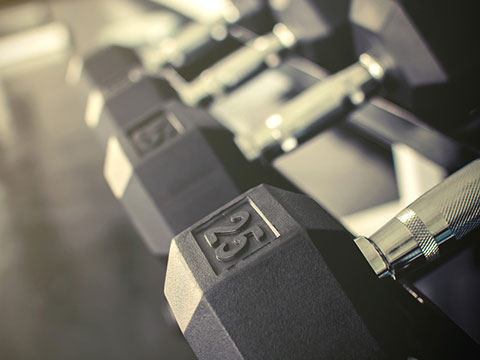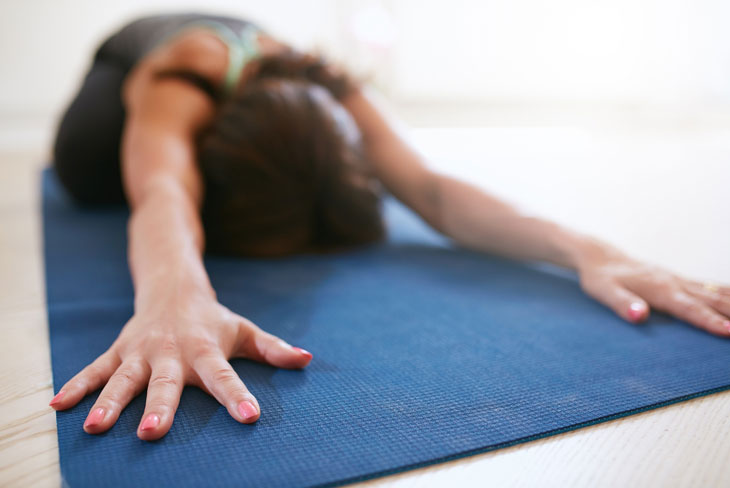The Five Aspects of Fitness
- By Rebecca Taggart
- Reading Time: 4 mins.
 Fitness is about that wonderful feeling of exhilaration and power after a good workout. Or is it? Many of us equate fitness with the ability to run, swim, or bike a certain distance, make it through a 90-minute yoga or Zumba class, or perhaps bench press a given weight. But true fitness requires elements of all these workouts put together.
Fitness is about that wonderful feeling of exhilaration and power after a good workout. Or is it? Many of us equate fitness with the ability to run, swim, or bike a certain distance, make it through a 90-minute yoga or Zumba class, or perhaps bench press a given weight. But true fitness requires elements of all these workouts put together.
How can we define fitness? The Physical Activity Guidelines for Americans recommends adults do a minimum of 30 minutes of moderate-intensity exercise five days per week, including at least 10 minutes of aerobic activity. For optimum health benefits, adults should increase that activity to 60 minutes per day, five days a week.
Following these guidelines brings a host of health benefits, including:
- The prevention/reduction of chronic diseases, including the three leading causes of death: heart disease, cancer, and stroke
- Weight control
- Improved sleep
- Decreased depression
- Increased strength, endurance, and energy
- Stronger, denser bones
- Reduced stress
- Better cognitive function for older adults
- Decreased diabetes risk
So does overall fitness result from any activity, so long as it is done for 30 to 60 minutes a day, five days a week?
The Five Aspects of Fitness
To maximize health benefits, there are five aspects of fitness that you should include in your weekly activities:
- Aerobic fitness
- Muscular fitness
- Bone strength
- Flexibility
- Balance
Get tips for your office
Be an office hero!Aerobic exercise is defined as a workout at a moderate pace that elevates the heart rate. Activities include jogging, running, jumping jacks, swimming, dancing, or other moderate pace exercises.
 Muscular fitness needs activities that build muscle strength and endurance. Strengthening activities should work all the major muscle groups: legs, hips, back, chest, abdominals, shoulders, and arms. These activities include lifting weights, push-ups, sit-ups, and working with resistance bands. Many yoga postures develop strength by using the body’s own weight as resistance. For some examples of muscle building exercises, see this Mayo Clinic’s slide show. Core muscles, including those in the abdomen, lower back and pelvis, support the entire body, are key to overall strength, and tend to become weak through sitting. Pilates and yoga strengthen these muscles, but you can develop core strength without taking a class by doing abdominal crunches, leg lifts, and controlled leg drops. Endurance is the ability to increase the stamina of your muscle strength.
Muscular fitness needs activities that build muscle strength and endurance. Strengthening activities should work all the major muscle groups: legs, hips, back, chest, abdominals, shoulders, and arms. These activities include lifting weights, push-ups, sit-ups, and working with resistance bands. Many yoga postures develop strength by using the body’s own weight as resistance. For some examples of muscle building exercises, see this Mayo Clinic’s slide show. Core muscles, including those in the abdomen, lower back and pelvis, support the entire body, are key to overall strength, and tend to become weak through sitting. Pilates and yoga strengthen these muscles, but you can develop core strength without taking a class by doing abdominal crunches, leg lifts, and controlled leg drops. Endurance is the ability to increase the stamina of your muscle strength.
Bone-strengthening activities involve weight-bearing exercises, either gravitational (impact activities such as running, jumping rope, tennis, basketball, and yoga sun salutations) or muscle-loading (weight lifting and resistance). Although we tend to associate bone weakness and osteoporosis with older women, men are also vulnerable. Up to 20% of men over age 50 will experience osteoporosis-related fractures, so all adults should include bone-strengthening exercise in their fitness routines.
Flexibility is the ability to move the joints through a full range of motion without pain, as well as the length of your muscles. Good flexibility promotes better posture, balance, agility, coordination, and can help prevent injuries and falls. Stretching joints and muscles daily can enhance your flexibility and range of motion. Although we tend to think of stretching as a warm-up for other activities, it is best to stretch after muscles are already warmed by more aerobic exercise. Try a low-intensity activity, such as walking or slow jumping jacks, for 5-10 minutes before stretching. For ideas on ways to stretch, view the Mayo Clinic’s slide show on basic stretches. Practicing yoga will develop flexibility as well as strength.
 Balance provides stability for the whole body and reduces the risk of injuries. Try standing on one leg for increasing periods of time to improve your overall stability (remember to alternate legs). Activities such as tai chi, yoga, and even walking promote balance. As we age, our balance deteriorates and falls can cause life-threatening fractures and other injuries. Check out the Mayo Clinic’s slide show on balance exercises for more simple balance-promoting exercises.
Balance provides stability for the whole body and reduces the risk of injuries. Try standing on one leg for increasing periods of time to improve your overall stability (remember to alternate legs). Activities such as tai chi, yoga, and even walking promote balance. As we age, our balance deteriorates and falls can cause life-threatening fractures and other injuries. Check out the Mayo Clinic’s slide show on balance exercises for more simple balance-promoting exercises.
Fitness is the Sum of All Parts
Overall fitness is more than the sum of its various parts—it supports health and longevity, but also stabilizes moods and creates a sense of well-being. It’s never too late to begin a fitness program, or round out the one you currently have. You will increase your quality of life both now and possibly for the rest of your life.
Disclaimer: always check with your healthcare professional before beginning a new exercise regime.
Rebecca Taggart is a San Francisco-based teacher and yoga instructor.
Looking for more fitness tips? We’ve got plenty!


